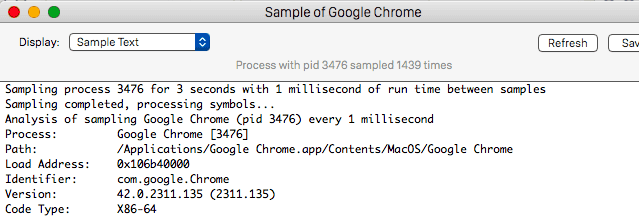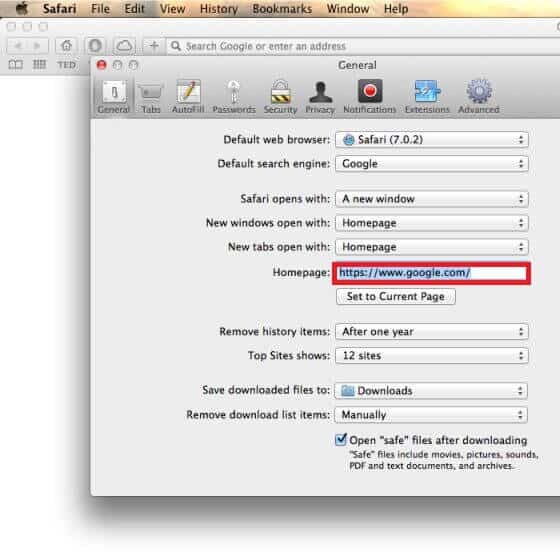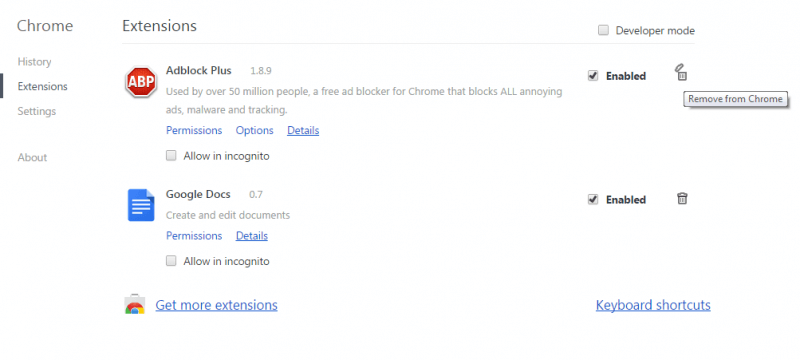Function Blast
Function Blast targets browsers on macOS devices in order to convert them into online advertising platforms. Function Blast therefore falls into the category of so-called browser hijacker applications.

Nowadays, the ads we tend to see online, while browsing the Internet, are pretty much inescapable. You can get ad-blockers in your, Safari Chrome and Firefox (and other) browsers, you can try to stay away from sites with overly aggressive advertisements and generation of commercials and page redirects and even then you will still likely happen to come across the occasional irritating page redirect, pop-up, pop-under, nagging banner or some other kind of intrusive ad.
However, not all ads are the same and while the ones coming from certain sites, though unpleasant, are not much of an issue, there is a specific type of web adverts that can be quite of a nuisance and may sometimes even be hazardous and unsafe. What we are referring to right now are the advertisements and the page-redirects generated by browser hijacker apps like Function Blast.
Function Blast for Mac
Function Blast for Mac is a software tool that looks like an extension for a browser and it may even initially seem to operate in a similar way. Function Blast for Mac may even make certain changes to your browser’s interface (e.g. new homepage or search engine).
However, there are a couple of significant differences between a browser add-on or extension that you’d like to keeping your browser or at least would not mind having and an browser hijacker app. The main issue with browser hijacker tools is, as you have probably already guessed, their tendency to spam you with obstructive advertising materials and to redirect your web surfing to pages and sites that you don’t really want to go to. Of course, this isn’t as dangerous as, say, having a cyber threat like spyware, ransomware or a Trojan on your computer but it could still be quite irritating and may even, at times, expose your machine to certain risks.
As we said above, Function Blast is yet another browser hijacker app with similar irritating capabilities and if you are seeking a way uninstall it, the next steps will guide you through the process of removing the unpleasant software and stopping its intrusive ads.
What is Function Blast?
Apps like Function Blast serve their developers in that they earn revenue from paid ads on your screen. Namely, Function Blast generates profit based on the number of clicks or views on said ads.
We understand that some of you may not mind the ads coming from Function Blast all that much (although, at times, the commercial materials could get really, really irritating). However, even if you can tolerate the activity of this browser hijacker application, you should know that it is still better if you get rid of it.
The FunctionBlast app
Browser hijackers like the FunctionBlast app are not always as safe as they may get promoted to be by their creators. Of course, the FunctionBlast app itself is indeed not supposed to cause harm to your system but the same cannot always be said about its ads.
As you probably know, not all online advertisements are safe and though Function Blast is not intended to show you harmful adverts, it may still do that even if it isn’t its purpose per se. And, should you happen to click on the wrong banner, pop-up, link or page redirect, you can easily get insidious viruses like Trojans and ransomware and spyware on your computer which is certainly not something you’d want.
SUMMARY:
| Name | Function Blast |
| Type | Browser Hijacker |
| Danger Level | Medium (nowhere near threats like Ransomware, but still a security risk) |
| Symptoms | The excessive generation of ads, banners, page redirects and other obstructive commercial materials in your browser are sure to give away the presence of the pesky application. |
| Distribution Method | An app like Function Blast could get distributed in many ways – from spam messages and misleading ads to software bundles and Internet update suggestions. |
| Detection Tool |
Remove Function Blast Mac Virus

The first thing you need to do is to Quit Safari (if it is opened). If you have trouble closing it normally, you may need to Force Quit Safari:
You can choose the Apple menu and click on Force Quit.
Alternatively you can simultaneously press ⌘ (the Command key situated next to the space bar), Option (the key right next to it) and Escape (the key located at the upper left corner of your keyboard).
If you have done it right a dialog box titled Force Quit Applications will open up.
In this new dialog window select Safari, then press the Force Quit button, then confirm with Force Quit again.
Close the dialog box/window.

WARNING! READ CAREFULLY BEFORE PROCEEDING!
Start Activity Monitor by opening up Finder, then proceed to ![]()
Once there, look at all the processes: if you believe any of them are hijacking your results, or are part of the problem, highlight the process with your mouse, then click the “i” button at the top. This will open up the following box:

Now click on Sample at the bottom:

Do this for all processes you believe are part of the threat, and run any suspicious files in our online virus scanner, then delete the malicious files:


The next step is to safely launch Safari again. Press and hold the Shift key while relaunching Safari. This will prevent Safari’s previously opened pages from loading again. Once Safari is opened up, you can release the Shift key.
On the off chance that you are still having trouble with scripts interrupting the closing of unwanted pages in Safari, you may need to take some additional measures.
First, Force Quit Safari again.
Now if you are using a Wi-Fi connection turn it off by selecting Wi-Fi off in you Mac’s Menu. If you are using a cable internet (Ethernet connection), disconnect the Ethernet cable.

Re-Launch Safari but don’t forget to press and hold the Shift button while doing it, so no previous pages can be opened up. Now, Click on Preferences in the Safari menu,

and then again on the Extensions tab,

Select and Uninstall any extensions that you don’t recognize by clicking on the Uninstall button. If you are not sure and don’t want to take any risks you can safely uninstall all extensions, none are required for normal system operation.![]()
The threat has likely infected all of your browsers. The instructions below need to be applied for all browsers you are using.
Again select Preferences in the Safari Menu, but this time click on the Privacy tab,
Now click on Remove All Website Data, confirm with Remove Now. Keep in mind that after you do this all stored website data will be deleted. You will need to sign-in again for all websites that require any form of authentication.
Still in the Preferences menu, hit the General tab

Check if your Homepage is the one you have selected, if not change it to whatever you prefer.
Select the History menu this time, and click on Clear History. This way you will prevent accidentally opening a problematic web page again.
![]() How to Remove Function Blast From Firefox in OSX:
How to Remove Function Blast From Firefox in OSX:
Open Firefox, click on ![]() (top right) ——-> Add-ons. Hit Extensions next.
(top right) ——-> Add-ons. Hit Extensions next.

The problem should be lurking somewhere around here – Remove it. Then Refresh Your Firefox Settings.
![]() How to Remove Function Blast From Chrome in OSX:
How to Remove Function Blast From Chrome in OSX:
Start Chrome, click ![]() —–>More Tools —–> Extensions. There, find the malware and select
—–>More Tools —–> Extensions. There, find the malware and select ![]() .
.

Click ![]() again, and proceed to Settings —> Search, the fourth tab, select Manage Search Engines. Delete everything but the search engines you normally use. After that Reset Your Chrome Settings.
again, and proceed to Settings —> Search, the fourth tab, select Manage Search Engines. Delete everything but the search engines you normally use. After that Reset Your Chrome Settings.
If the guide doesn’t help, download the anti-virus program we recommended or try our free online virus scanner. Also, you can always ask us in the comments for help!

Leave a Reply